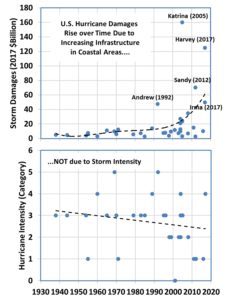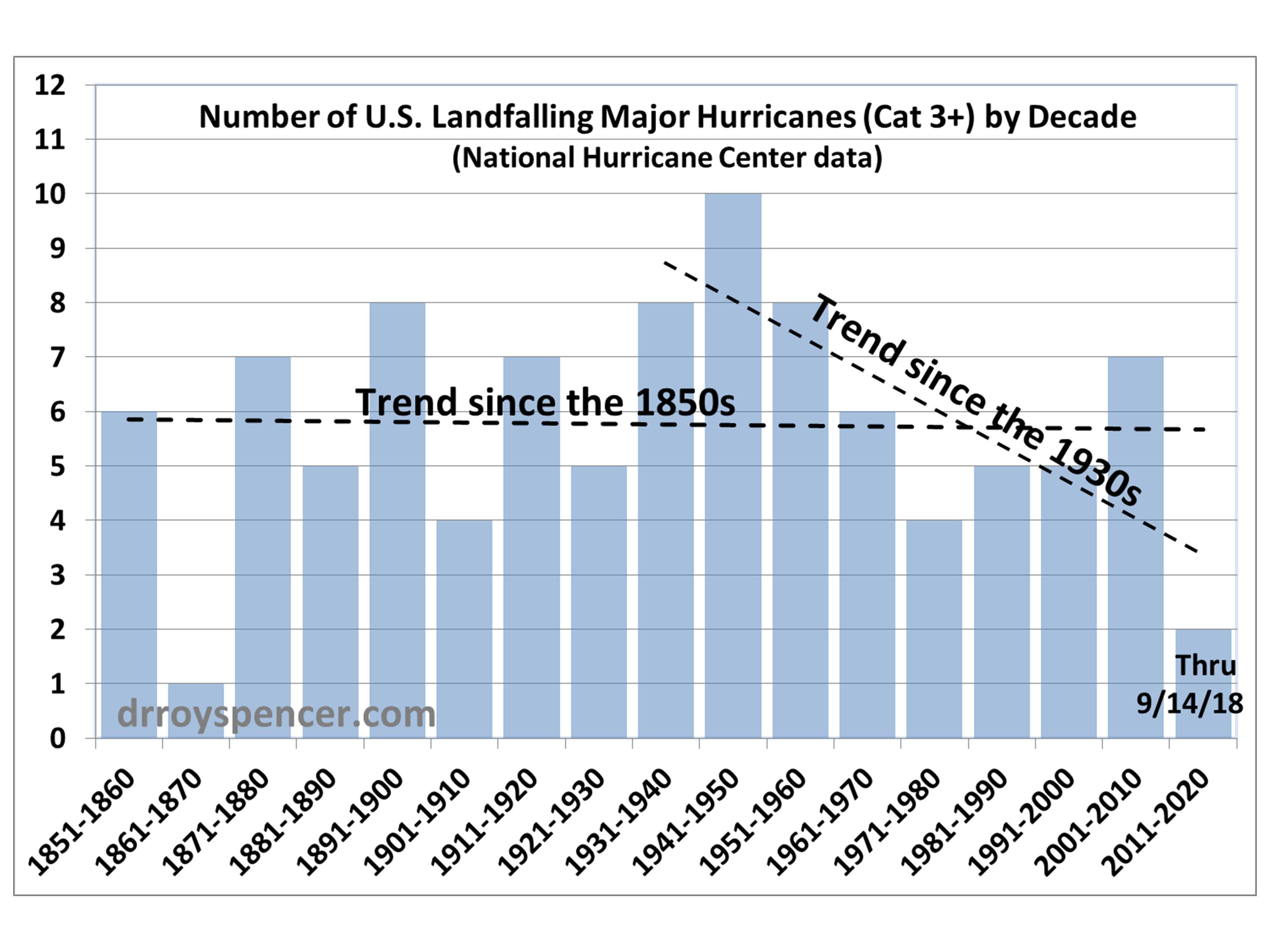Kerby Anderson
Every time a major hurricane hits the American coastline, we can be sure to hear more claims that the devastation is due to global warming. Reporters and politicians argue that the Earth’s changing climate is fueling these “supercharged storms” and destroying our coastal areas.
Fortunately, Dr. Roy Spencer is providing some perspective to the hyperbole and fear mongering that surface with each tropical storm or hurricane. If you look at two graphs he has put together, you can see how hurricane damage has increased even though storm intensity has slightly decreased.

Let me take the second point first. He shows that hurricane intensity since the 1930s and 1940s has decreased. The correlation line trends slightly downward even though we have had some significantly intense storms from time to time. And it is worth mentioning that until 2017, the United States went 11 years without a major hurricane strike.
You may be thinking that is fine, but what about devastating hurricanes like Katrina, Sandy, and Harvey? When measured in terms of billions of dollars in damage, those were obviously severe but also are significant outliers. The cost was huge for two reasons: increased population and an increase in the amount of valuable and vulnerable infrastructure in coastal areas.
When Hurricane Florence hit North Carolina, few in the media reminded us that the last major hurricane to hit North Carolina was Hurricane Fran in 1996. That was 22 years ago.
None of this is meant to minimize the devastating impact that hurricanes have on coastal areas. We need to do all we can to protect people before a hurricane hits and immediately provide assistance to victims after a hurricane passes. But let’s stop blaming climate change for these hurricanes.
 Listen Online
Listen Online Watch Online
Watch Online Find a Station in Your Area
Find a Station in Your Area









 Listen Now
Listen Now Watch Online
Watch Online
